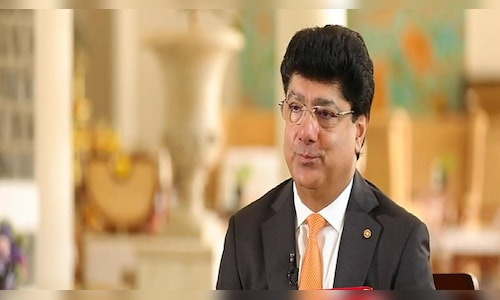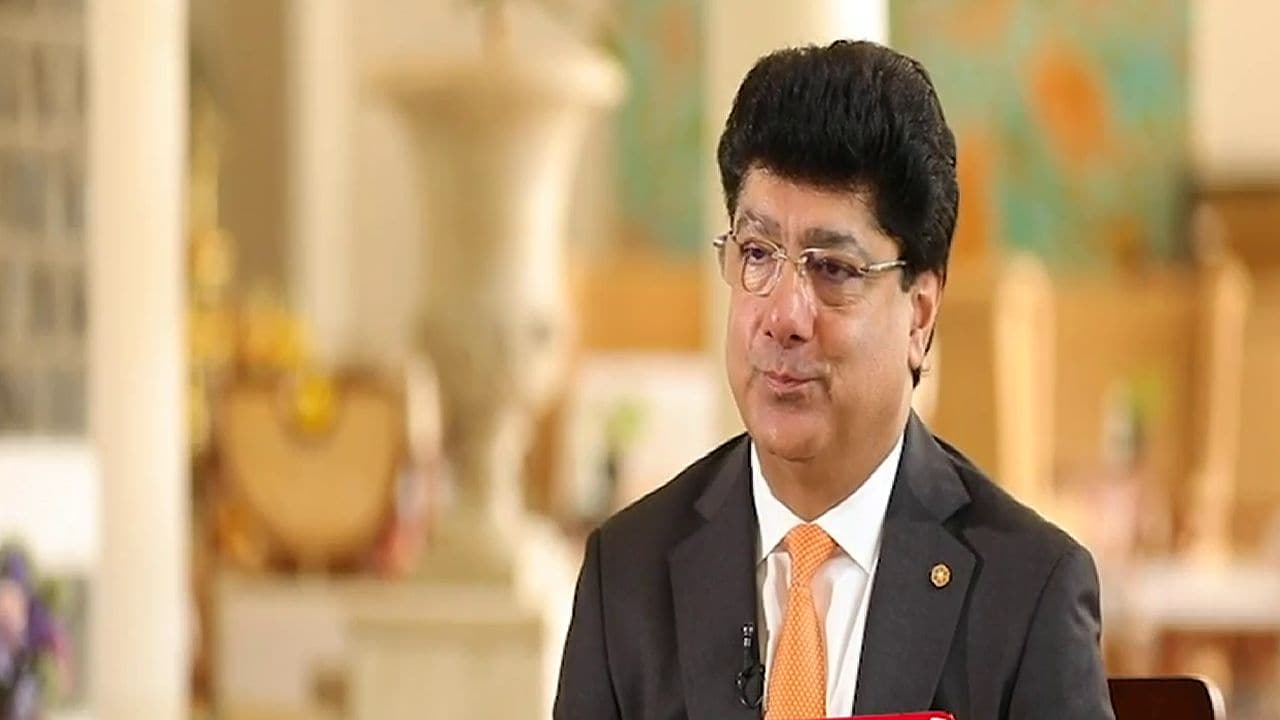

Speaking to CNBC-TV18, Chhatwal reaffirmed Taj’s position as the cornerstone of IHCL’s portfolio, calling it the “great crown jewel” of the company. The brand, which has been a hallmark of luxury for over 121 years, will remain a significant growth driver, constituting nearly 70% of the portfolio in the next two to three years. “Luxury with Taj was, is, and remains iconic, which has helped Taj become India’s strongest brand and the world’s strongest hotel brand,” he stated.
While Taj continues to thrive, IHCL is also focusing on expanding its portfolio through reimagined and new brands. The Gateway and Ginger brands, which have been revitalised, are expected to scale up rapidly and contribute significantly to IHCL’s goal of doubling its portfolio by 2030. Chhatwal noted that these newer ventures aim to cater to a diverse clientele in India, from luxury to more affordable segments, reflecting the country’s heterogeneous market.
“We are addressing the needs and wants of all kinds of customers in a heterogeneous country like India, and not just focused on luxury,” Chhatwal said. The company’s strategic focus includes entering tier-II and tier-III cities, as well as niche markets like Lakshadweep, the Northeast, and spiritual destinations such as Puri.
Chhatwal observed a significant change in the demand-supply dynamics of the hospitality industry, driven by India’s GDP growth, enhanced infrastructure, and rising disposable incomes. In 2024 alone, IHCL signed nearly 80 new agreements and opened around 40 hotels. He attributes this momentum not only to post-pandemic “revenge tourism” but also to structural shifts in the market.
The year 2025 looks promising with high-profile events like the Aero Show in Bangalore, the World Audio-Visual & Entertainment Summit (WAVES), and the Maha Kumbh, which will stimulate demand across various segments, including business and spiritual tourism.
Despite the optimism, Chhatwal acknowledged that foreign tourist arrivals in India remain a weak spot. India’s numbers lag behind those of regional competitors like Vietnam and Thailand. However, he expressed confidence in initiatives led by the government and the energetic tourism minister to address this gap and meet the ambitious target of 100 million foreign tourist arrivals by 2047.
Below is the excerpt of the interview.
Q: What will be the growth drivers? Will it be these new concepts like Ama or branded residences? Will it be spiritual tourism? Which is the big growth driver that you see in the year and years ahead?
Chhatwal: The big growth driver in the next five years will remain our great crown jewel, which is the Taj brand. And the growth in the Taj brand has been phenomenal. We’ve done a lot of upgrades and a lot of repositioning, and we expect Taj to remain almost 70% of the portfolio in the next two to three years. But the new businesses will keep increasing their share to get to 20–25%. That is very critical to us because we are addressing the needs and wants of all kinds of customers in a heterogeneous country like India and not just focused on luxury.
Luxury with Taj was, is, and remains iconic, which has helped Taj to become India’s strongest brand and the world’s strongest hotel brand. And we want to maintain that position like we’ve been doing for the last four, five years.
Obviously there is no replacement for Taj, but Taj has been around for 121 years. Some of these names may be old, but they’re new startups. The reimagined Gateway has nothing to do with the Gateway of the past, but the name was good, the idea was good, and we have just fine-tuned it and re-imagined and re-launched it like we did with Ginger. I think, all in all, we expect these new brands to scale up very fast. And these will be the key contributors to the doubling of the portfolio by 2030.
We are not going to build a Taj in every nook and cranny of India. The market has to be able to sustain the cost-based capital structure that a Taj type of branding needs.
Q: We had this advantage of revenge tourism, which has obviously taken your stock over the ₹1,00,000 crore market cap mark. You were the best beneficiary of that revenge tourism. Is it continuing or has it begun to fade?
Chhatwal: I would like to start the year on a positive note. We’ve benefited a lot from a not-like-for-like growth. In the calendar year 2024, we signed almost 80 new agreements. That means we added so many more hotels to the pipeline. We opened almost 40 hotels. And I would like to say that, yes, there was some kind of travel surge post-COVID. But more importantly, this is coming through the change in the demand and supply scenario. The demand is stronger than the supply because of the change in the infrastructure in the country and because of the GDP growth of the country, which is the change in the disposable income.
And when I just look at the next quarter, we have several government delegations and heads of state coming in January and February. You have the Aero show in Bangalore; you have a new event happening for the first time in India called the World Audio-Visual & Entertainment Summit (WAVES 2025) in the first week of February. There’s the Maha Kumbh, and that spiritual tourism will start from the 13th or 14th of this month, ending with Maha Shivratri towards the end of February. There is a lot happening on all sources of demand, whether it’s business with WAVES happening in Bharat Mandapam. I always said, that if we get one big event every quarter in Bharat Mandapam and Yashobhoomi in Delhi, the upsurge in demand will be significant.
And the same is very important for the wedding. The year 2025 is going to have higher wedding dates than we’ve had in the last few years. All in all, we remain very optimistic.
There is only one place where the sector is lagging: foreign tourist arrivals in India. And with our very energetic tourism minister, I also remain optimistic on that front that we will put some right levers in place to increase those arrivals and get to that 100 million target, that we have set for by 2047.
Q: This is a very interesting theme you’ve put on the table in terms of foreign tourists. Ten years ago, when you went to Colaba, you saw this mix of so many nationalities. Now you see less of foreign tourists over there. We seem to be missing out to Vietnam, Thailand and Bangkok. We’re losing out to somebody. Will Indian hotels plan to put hotels there in Vietnam, in Bangkok?
Chhatwal: The action is here. These are small niche markets; they’re important. Whenever any opportunity arises, we will try to benefit from it, but our focus on using our time, capital and resources stays on the Indian subcontinent. There is so much happening in Tier-II and Tier-III cities. We are building a lot of new markets, including the islands of Lakshadweep and a lot of new markets in the Northeast. Spiritual destinations, we just opened a hotel in Puri. A lot is happening on all fronts.
I’ve always mentioned the growth of our Ginger brand. This is a part of our new businesses, and new businesses are doing a top-line growth of over 30–35% and that’s what we have guided the market. And it will only increase; it’s not going to slow down because of the change in the business model, the change in the brand scale, and the change in India itself, which is driving growth.
Q: You’re joining us from Goa, and some reports from Goa newspapers told us that the beaches were not so crowded. Is it that Goa is getting bypassed? Was the holiday season not as up to the mark as we all expected?
Chhatwal: I don’t know of the entire market. I have seen a statement from the tourism minister of Goa, which says in the newspaper today that the year has been very strong, and for us, we have 50 outlets in Goa, including homestays, and we are trending ahead of last year. I don’t see any reason for any slowdown, but yes, there has been a chatter about it about six weeks ago, but we have to take the year as 365 days and not just like 10, 15 days here or there.
The start in December was relatively slow compared to last year, but the pickup from the 20th of December to the 31st of December was phenomenal.



